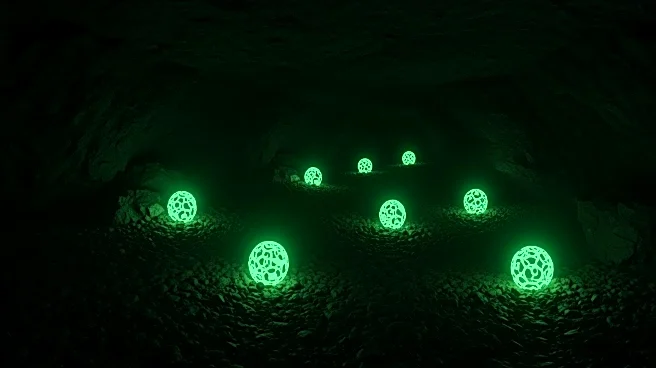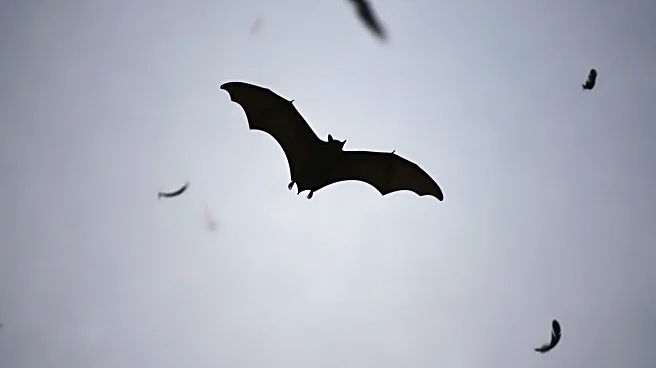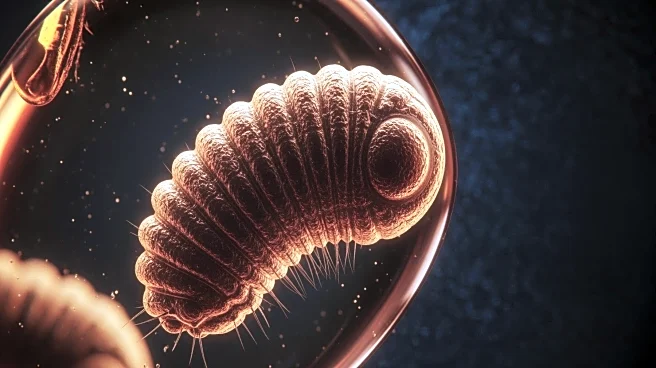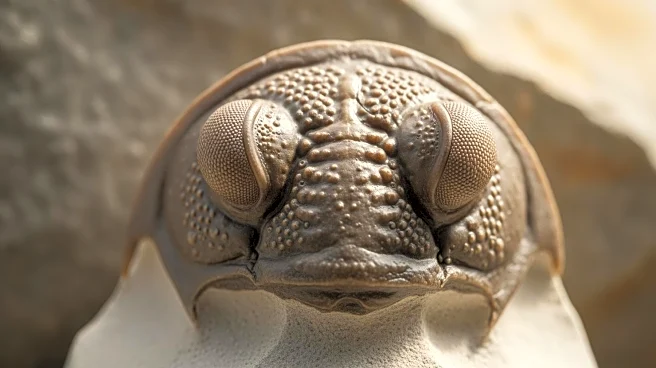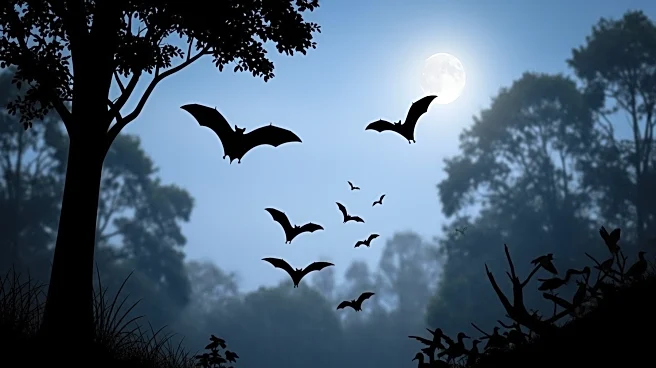What's Happening?
Researchers at the University of Georgia have discovered that some North American bats emit a green glow under ultraviolet light. The study examined 60 museum specimens from six bat species, finding consistent
photoluminescence across all species, sexes, and ages. The glow originates from the bats' wings, hind limbs, and the membrane between their legs. Despite the discovery, scientists remain uncertain about the evolutionary purpose of this trait, as the glow is uniform across species and does not appear to aid in species recognition or mate differentiation.
Why It's Important?
This discovery adds to the growing body of evidence that various mammals exhibit photoluminescence, challenging existing understanding of animal biology and behavior. The uniformity of the glow suggests a shared evolutionary trait, potentially offering insights into the evolutionary history of bats. Understanding the purpose of this glow could have implications for studying bat behavior and ecology, as well as broader applications in evolutionary biology.
What's Next?
Further research is needed to determine the behavioral function of the glow, particularly in live bats. Scientists aim to explore whether the glow plays a role in bat communication or navigation during flight. The study opens avenues for investigating photoluminescence in other animal species and its potential ecological significance.
Beyond the Headlines
The discovery raises questions about the evolutionary pressures that may have led to the development of photoluminescence in bats. It also highlights the importance of museum collections in providing valuable data for scientific research, offering a window into the natural history of species.
